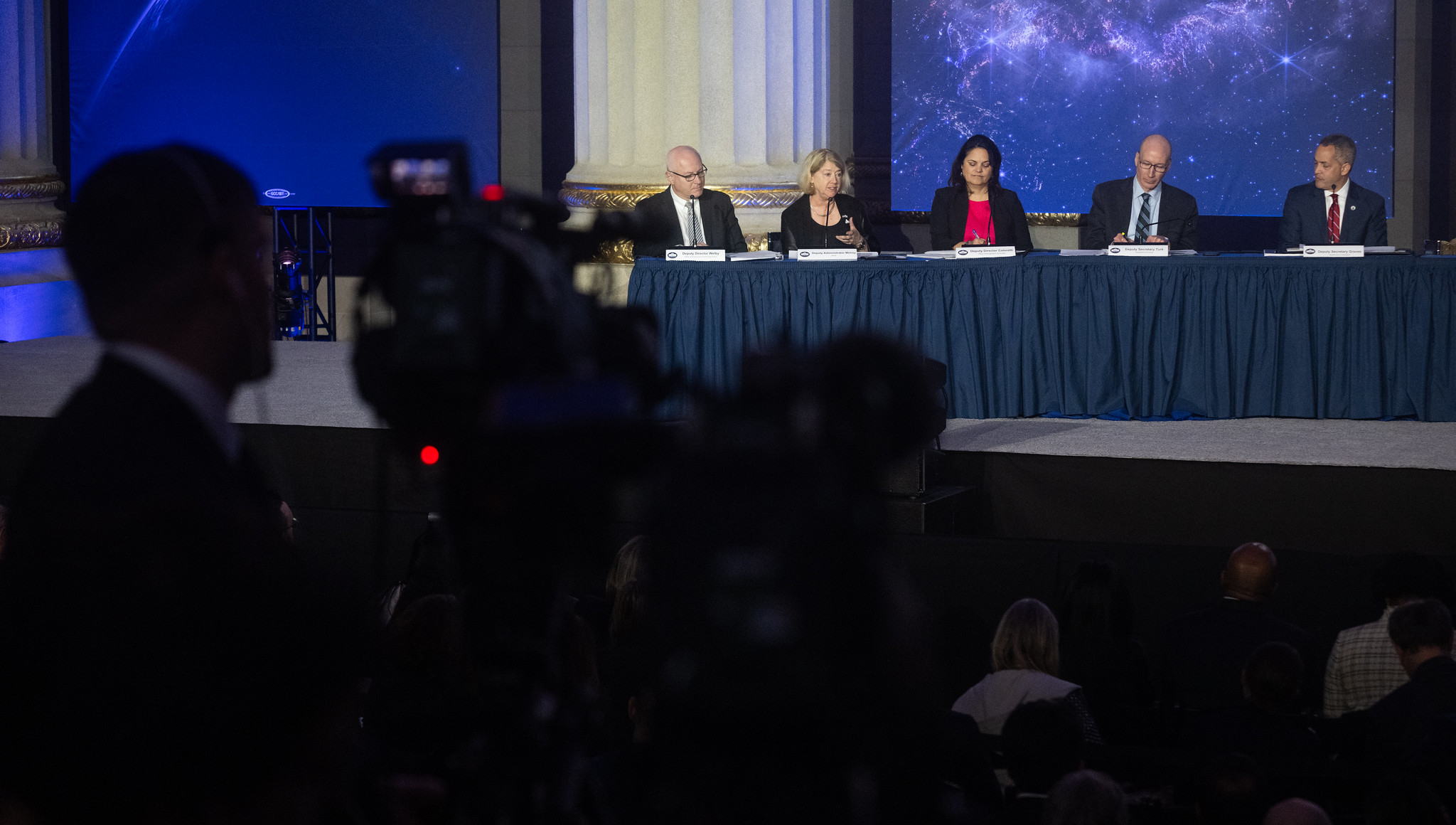
Vice President Kamala Harris highlighted the importance of international partnerships and the societal benefits of space exploration, including NASA’s Earth science missions and the agency’s efforts to build a responsible, sustainable human presence in space during the Biden-Harris Administration’s third National Space Council meeting Wednesday, held at the Andrew W. Mellon Auditorium in Washington.
“For generations, our nation has led the world in the exploration and use of space,” said Harris. “In the coming years, one of the primary ways we will continue to extend that leadership is by strengthening our international partnerships, combining our resources, scientific capacity, and technical skill with that of our allies and partners around the world, all in furtherance of our collective vision.”
During the meeting, NASA announced it will deepen its partnership with the U.S. Agency for International Development (USAID) by advancing data collection for enhanced air quality monitoring in South America and Africa. Under this effort, NASA and the Italian Space Agency will partner to build and launch the Multi-Angle Imager for Aerosols (MAIA) mission, which is expected to launch in 2025 to enable improved measurements of airborne particulate matter in large metropolitan areas. The mission marks the first time NASA has partnered with epidemiologists and health organizations on a satellite mission to study human health and improve lives.
“NASA is excited to partner with the Italian Space Agency on the MAIA mission while simultaneously strengthening our support for USAID,” said NASA Deputy Administrator Pam Melroy. “Airborne particles pollute some of the world’s most populous cities and have been linked to respiratory and cardiovascular diseases, as well as adverse reproductive and birth outcomes. Results from this mission will allow us to better understand the health impacts of pollution in geographically diverse global communities, including our Southern Hemisphere.”
The Vice President also underscored the importance of international partnerships enabling long-duration stays on the Moon and future human missions to Mars.
“In consultation with international and industry partners, NASA has built a cohesive and robust Moon to Mars strategy to enable a responsible, sustainable presence throughout the solar system. Our future depends on partnerships,” said Melroy. “Together, we will strategically advance science, boost our national posture, and inspire a new generation to want to explore the cosmos.”
NASA has welcomed significant development progress and investments by international partners for its Artemis program. The European Space Agency provides the European Service Module, the Orion spacecraft’s powerhouse. Additionally, Canada, Japan, and Europe are contributing to Gateway, a human-tended space station in lunar orbit. Europe and Japan are building the International Habitation Module, Europe is providing the European System Providing Refueling, Infrastructure and Telecommunications (ESPRIT) module, Japan will provide cargo resupply with an upgrade of its H-II Transfer Vehicle (HTV-X), and Canada is developing Canadarm3, a robotic arm to perform science utilization and maintenance. With these significant contributions, the United States intends to land an international astronaut on the lunar surface by the end of the decade.
In coordination with the U.S. Department of State, the agency has also welcomed 33 signatories to the Artemis Accords since it was established in 2020, ten in the past year alone. The Artemis Accords establish practical principles to guide space exploration cooperation among nations, including those participating in NASA’s Artemis program. The Accords signatories are holding focused discussions on how best to implement the Artemis Accords principles, including transparency and deconfliction at the Moon.
NASA also highlighted the April 2023 release of the initial Moon to Mars architecture, comprised of the elements needed for long-term, human-led scientific discovery in deep space. NASA recently hosted its second Architecture Concept Review in November and anticipates releasing the outcomes of the annual cycle early in 2024. NASA noted that it is seeking international partnerships for an array of elements identified in the architecture and is in conversation with international space agencies to identify future partnership opportunities.
A full recording of the National Space Council meeting is available online at:
More information on the outcomes of the meeting is available at:
Faith McKie / Amber Jacobson
Headquarters, Washington
202-262-8342 / 240-298-1832
faith.d.mckie@nasa.gov / amber.c.jacobson@nasa.gov

























